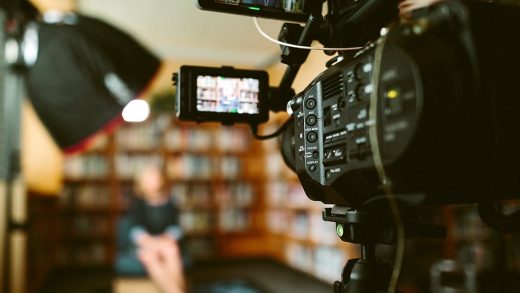Exactly what you need to know to successfully live-stream an event
With conference season in full swing, we’re seeing the newly launched LinkedIn Live explode with interactive events. Brands, organizations, schools, meetups, and individuals are bringing their communities together to announce products, educate customers, discuss industry trends, and celebrate those who are making a difference.
Live video brings viewers into the event and makes them feel like they are there participating in real time alongside others who share their interests. Beyond the opportunity to reach more people, sometimes even more than attending the physical event, the power of live video comes from creating shared moments of sustained attention and engagement online that are unique to the format.
The opportunity doesn’t stop with the main stage. Brands are streaming preshow sessions to build narratives for key themes and speakers. During the show, they go live from the expo floor to highlight partners or stream hallway conversations with first-time or veteran attendees. They host wrap-up shows and morning previews. After the event, they stream reflection Q&As to invite further interaction and response.
Making the most of live video takes preparation and follow-up. Here are some tips and best practices from broadcasters we’ve seen succeed with events:
Before you stream
For big events, you’ll want to do some promotion a few days or a week in advance to attract the widest audience and boost your viewership.
Promote
Post the date and time of the stream on all your social media accounts and encourage followers to tune in. Don’t underestimate the power of social and your demand-generation channels—blogs, emails, newsletters, and webinars—to promote the stream in advance and impact viewership.
Create a hashtag
A unique hashtag can capture your audience’s attention and interest. Make sure to include it—along with other relevant hashtags—in your pre-event promotional posts.
Take advantage of your network
Ask your employees, executives, and partners to share your promotional posts for the event for an even bigger boost of visibility. Don’t forget to have them include the event hashtag.
Plan for an optimal time
Choose to go live at a time that allows the largest segment of your audience to join. Test different days of the week and times of the day until you find your organization’s unique sweet spot. Remember that you may have potential viewers in multiple time zones.
Now that you’ve promoted the live event, it’s time to get the logistical details nailed before showtime.
Before you go live
Test your internet connection
Use a service such as speedtest.net to ensure you’ve got at least 10 Mbps upload speed.
Get the right people in the room
You’ll likely want at least two people on hand to facilitate a live stream: One person to operate the camera and one person to moderate the conversation.
Plan to stream for at least 15 minutes
The primary benefit of live video is that you can interact with your audience in real time. To do so, you need to give your audience time to join the stream. The audience will likely build the longer you stream, so don’t cut your efforts short with a quick broadcast.
During the event
The big day is here, and the curtain is about to go up. Remember to stay on your toes and make sure to interact with your audience: Engagement is key to realizing ROI on your live stream investment.
@mention guests and partners in your post
Help members discover your stream by tagging members and pages involved with your stream. You can edit your post on LinkedIn to add these once the stream has begun.
Moderate your stream
Consider assigning someone to moderate the conversation, whether that’s asking and answering questions or removing inappropriate comments. Responding to audience questions during the stream, whether in the stream or the comments, is key to keeping engagement up.
Engage your audience
The major selling point of live versus prerecorded video is that your organization can have a real-time conversation with viewers. To encourage viewer participation, make sure your host or moderator asks questions of the audience that can then be responded to either live or in the comments.
Keep promoting
Just because the broadcast has begun doesn’t mean the opportunity to attract more viewers is over. Have your employees and partners reshare the live stream to their networks for wider visibility. Embed the stream on your website or blog.
Have fun
Part of the beauty of live video is that it’s live and audiences know it. It’s okay if you don’t nail your script perfectly or if something unexpected happens. Embrace the unexpected and inject some humor into your stream.
After the stream
Whew, you’ve done the heavy lifting. Now it’s time to make sure you’re getting the most bang for your buck.
Repurpose your video
Download your live stream after its conclusion so you can repurpose it in other marketing materials. Consider slicing the content into video clips and video ads, or transcribing the conversation and turning it into a blog post.
Answer the remaining comments or questions
If you couldn’t get to everyone’s comments during the stream, be sure to follow up. You might spark ongoing conversation and increase engagement by asking commenters what they thought of the stream.
Check analytics
LinkedIn provides breakdowns of viewers by company, role, and location, as well as time series of metrics for watch time, concurrent live viewers, and views. Your audience may vary by topic, time of day, day of the week, or other factors, so experiment with different approaches to reach different people within your audience.
Peter Roybal is head of video product at LinkedIn.
(11)



